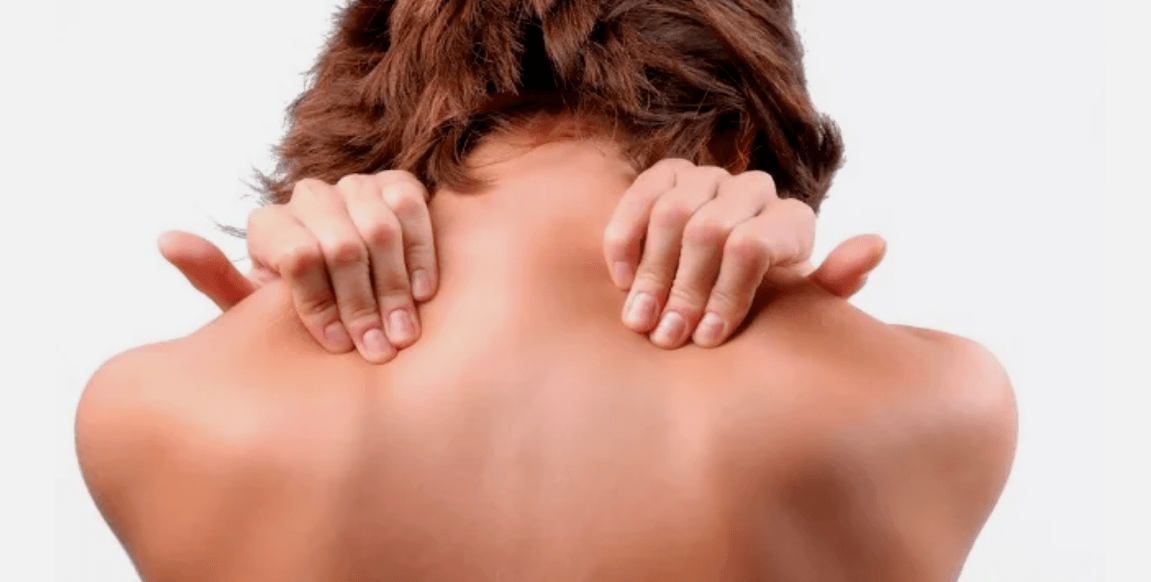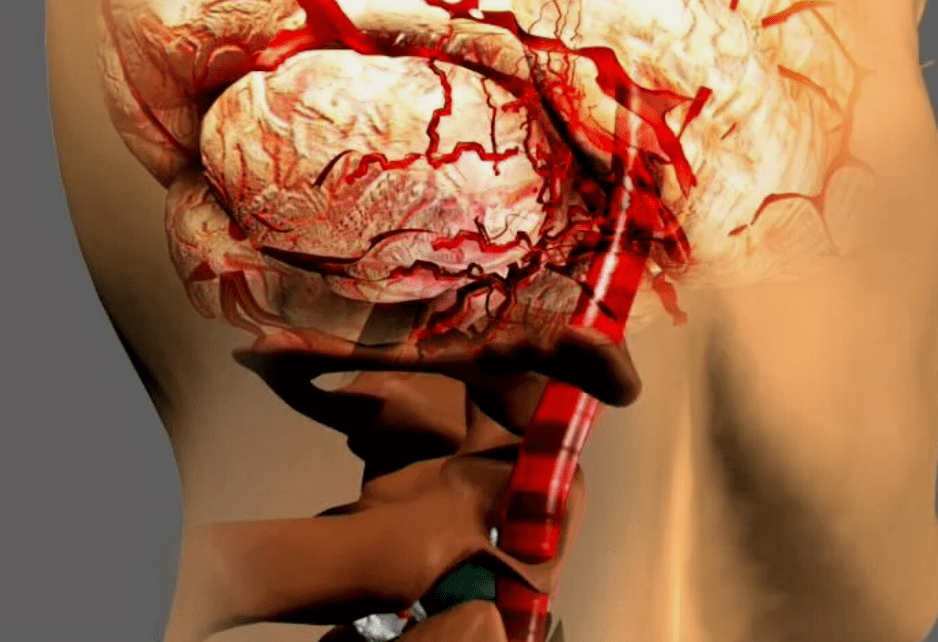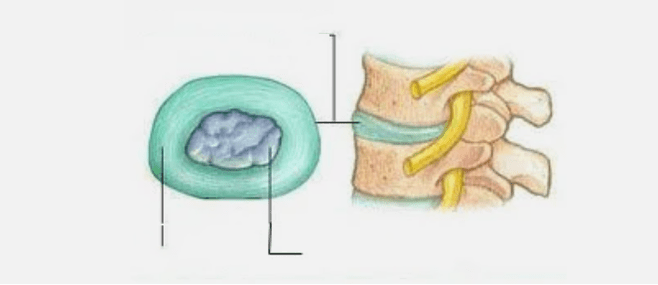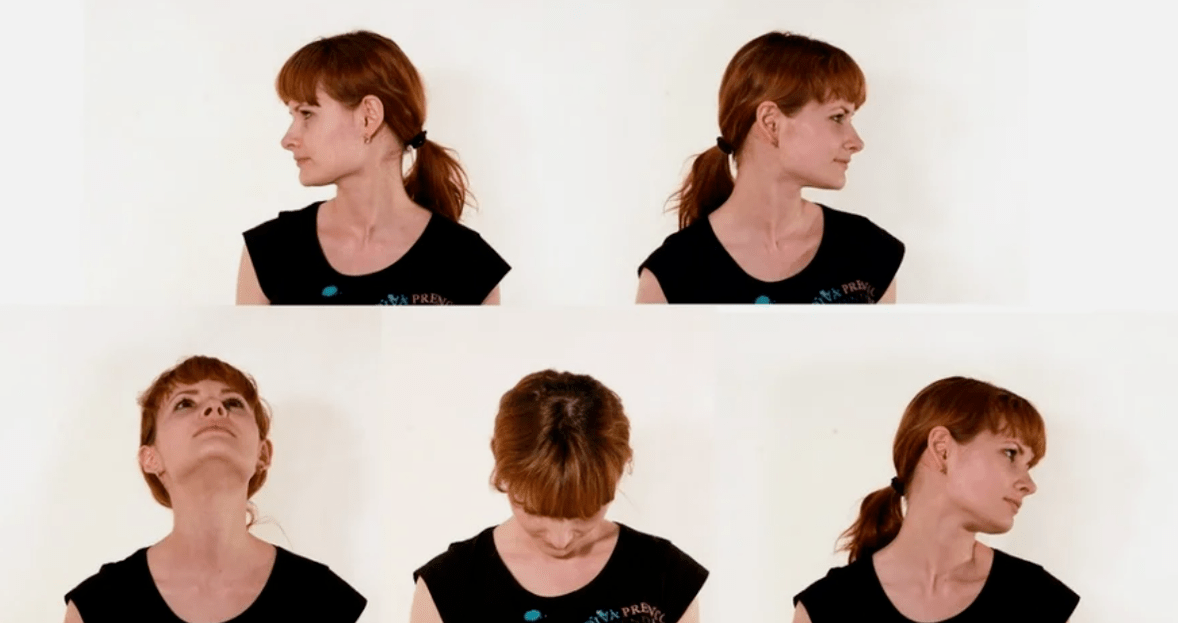
Cervical osteochondrosis is a disease in which pulp between vertebrae, which acts as a shock absorber, becomes an ossified fabric.
Neck pain?Dizziness?Crunch?Cervical shots?"It's really osteochondrosis ..." - You think, get a request on the Internet.Without panic!The osteochondrosis of the cervical column is not a sentence, it can be prevented, slowed down and even healing.As?We are going to solve it.
Introduction
Unfortunately, cervical osteochondrosis is a quiet and insidious disease.You may not suspect its existence, until at some point the muscle spasm and neck pain feel.Often, dizziness and numbness of the limbs are added.
The reason for such apparently unrelated phenomena in the complex nature of osteochondrosis.
What is osteochondrosis?Of the general ...
Osteochondrosis is a disease of the spine in which intervertebral discs are damaged, playing the role of shock absorbers.Tightening and unlearning, they give the elasticity and elasticity of the column, while allowing the body to maintain a balance in the movement process.With its partial or complete destruction, this balance is lost, which inevitably affects a person's motor activity.The cause of such changes is often the physical use and deformation of the disk or, more simply, its "aging."At the same time, the rest of our body can serve us faithfully for many years.
In general, it is accepted that osteochondrosis is an age disease.However, in recent years, the disease has been remarkably "younger": in the risk area there are 25 years and even younger.The guilt of everything is a sedentary lifestyle, malnutrition and unequal physical activity in the body.In addition, statistics show that women are sick more frequently than osteochondrosis.First, this is due to anatomical characteristics and emotional history.However, the disease is more difficult in men.
... to the private - cervical osteochondrosis
The osteochondrosis of the cervical column is more common.The fact is that it is in the neck that most vessels and nerve endings are concentrated, while vertebrae themselves are much smaller (approximately half compared to the lumbar department), and the muscle corset is tangibly weaker.
Together with the high mobility and proximity of the spinal cord, the neck of our body needs greater attention.
Why is cervical osteochondrosis dangerous?

Unfortunately, the danger of cervical osteochondrosis is justified anatomically: vertebral arteries pass through the cervical region, which saturate important brain centers in the rear of the brain.And any malfunction and violation of the blood supply can be irreversible, from the pathological curvature of the column (neck lordosis) to the complete loss of motor capacity, stroke and even death.
Fortunately, it is almost impossible not to notice the symptoms of an imminent disaster: problems with coordination, a strong deterioration in vision and hearing, frequent dizziness and loss of consciousness ...
If, together with regular cervical pain, you noticed these signs, consult a doctor immediately!
Diagnosis and symptoms of cervical column osteochondrosis
Osteochondrosis is a serious illness, and only a qualified specialist, that is, a vertebrologist who specializes in solving problems with the spine, the orthopedist or the neurologist can diagnose it.
The most precise ways of diagnosing cervical osteochondrosis: X -rays, computerized tomography (TC) and magnetic nuclear resonance (MRI), which allow not only the symptoms of cervical osteochondrosis, but also other concomitant changes in the body.
When several of the following symptoms appear, I immediately seek professional advice to the doctor.
- Opaque, painful and intense pain in the neck and neck
- cervical, creak when turning the head
- Dizziness, "Velo" before my eyes, fainting
- headache
- Nausea, vomiting
- Numbness of the extremities
- noise in the ears, visual disability
- General muscle weakness
The pain for osteochondrosis often hurts, given the head and is accompanied by numbness of the arms and legs.This is caused, in the first place, by a pinch of nerve endings and an increase in intracranial pressure.
Nature of osteochondrosis

Like any disease, the osteochondrosis of the column has several stages of development.
For a better understanding of the processes that occur in the body, we propose first to understand the structure of the disc itself, and then analyze what changes are characteristic of each stage of osteochondrosis.
The vertebral disk itself consists of several parts: a nucleus of the octopus jacket -bunken (inside), a fibrous ring (outer shell) and hyaline cartilage that separates the disc of the vertebra and performs the function of the power.
The pulp core is rich in water, and is responsible for depreciation, adjusting to the center of gravity, tightening and moving like a mercury ball.The fibrous ring that surrounds it, on the contrary, has a solid structure and consists of intertwined fibers.Since the main task of the fibrous ring is to protect the core of the damage, it is the one that takes the "blow" itself with high loads.
Osteochondrosis stages
Traditionally, four stages of osteochondrosis are distinguished.
First grade cervical osteochondrosis - preclinical stage
This is the early stage of the disease when the "drying" of the disc called so: its height and elasticity are reduced.
At the same time, there are still no structural changes, however, as well as symptoms and, consequently, complaints.You may not feel discomfort;The only "omen" can be morning rigidity and salt deposits.Although, you see, with our way of life, these sensations are rather the norm.
Cervical osteochondrosis of the second grade - The beginning of structural changes
Here irreversible changes begin in the pulpic nucleus: necrosis and destruction caused by a violation of metabolic processes, simultaneously with the formation of cracks in a fibrous ring.
The body begins to send SOS signals in the form of acute pain in the neck, decreased resistance and rapid fatigue.
Cervical osteochondrosis of the third grade - Progressive discos
The oppression of the fibrous ring is altered, as a result of which the octopoose core "stands out" on the spinal channel through the formed cracks.
If there is no complete break in the outer layer, the intervertebral disc can still be restored.This process is called the protrusion of the spine and is treated successfully.At the same time, it feels constant pain in the neck and everything back, progressing during loads and remaining in an awkward position.
In the case of complete destruction of the fibrous ring, the problems with coordination, dizziness and nausea are added to pain;There is a risk of disability.It is necessary to look for medical help quickly!
Cervical osteochondrosis of the fourth grade - Regeneration
As a result of irreversible processes between the vertebrae, growths (osteophytes) that block the mobility of the joints are formed.The octopoose core is replaced by a scar tissue, nerve endings are injured, a cure is only possible.
Paradoxically, in terms of well -being, you can feel notable improvements: the spine again acquires the ability to take loads.However, limited pain and motor activity will subsequently intensify.
The causes of osteochondrosis

Unfortunately, speaking of the causes of a disease as difficult as osteochondrosis, it must take into account many factors: from external conditions to physiological predisposition.
How to understand that it is at risk?Mentally, place a verification mark in front of each of the appropriate points for you and your lifestyle.
- Have you had column injuries?
- Is there excess weight (degree of obesity)?
- Explored by bad habits (smoking, alcohol consumption), regular stress?
- Does it suffer from chronic infectious diseases, metabolic disorders?
- Is your work related to hard physical work?
- Has it been diagnosed with flat posture and/or feet?
- Do you experience regular loads in the column?
If at least one of the questions that answered affirmatively, unfortunately, it is at risk.This is bad news.But there is also good: the osteochondrosis of the cervical column can be stopped, cured and even preventing with a timely diagnosis and the beginning of adequate prevention.
How to prevent osteochondrosis
There are a number of preventive measures that we recommend observing for the game "ahead" with osteochondrosis of the cervical column.
Step 1. Get up!
Are you leading a sedentary lifestyle?Sedentary work, many hours of stay on the computer, irregular and malnutrition, lack of sleep, stress ... Is it familiar?
All this contributes to the "stagnant" processes in the body and causes the initial stage of osteochondrosis.
To avoid the progression of the disease, reasonably addresses the daily routine, take regular breaks (every hour for five minutes) and take more care of your health.Believe me, you will soon say "thank you" yourself!
Take a rule: Put reminders (or in particularly "careless" cases: a alarm) so that you do not lose the moment in the emotion of work ... when you only need to get up and leave.
Step 2. Take care of your own comfort!
For convenience, we refer to the physical signals that the body gives.Listen and take care of yourself!
First, avoid excessive and unreasonable charges.If you are a usual gym, dose, do not miss the heat and follow the regularity of training.
Second, he renounces uncomfortable shoes.We do not urge the misfortune of getting rid of your favorite shoes or boots;Let them remain on special occasions.It is important that these "special cases" do not become their life standard in 24/7 mode."For each day" choose shoes with a comfortable block that does not cause discomfort and does not affect the posture and march.
Third, do not save in furniture and sleep accessories.If the office chair is not categorically suitable for you, agree or take care of your own comfort yourself.Subsequently, this unique investment can save it from serious regular expenses.
Use only anatomically correct furniture that reduces the load in the spine.For a house, choose a bed with a hard mattress and a comfortable suitable pillow in density and height.Anatomical or ordinary: you decide, because it depends a lot on the characteristics of your body.
Step 3. Don't forget prevention!
Warned: It means armed, right?
If you feel periodic fatigue and neck and back pain, or, on the contrary, you want to avoid them, we recommend a simple set of exercises, especially effective in the initial (preclinical) stage of osteochondrosis.
Gymnastics for cervical osteochondrosis

You can perform gymnastics for the osteochondrosis of the cervical column both at home and directly in the workplace.
- Sit uniformly, straighten your back, relax your hands and get it along the body.Turn your head alternately to the right and left, approximately 90 degrees (or how much the joints allow).Move gently, avoid sudden movements.
Make 8 repetitions for the first time, and in the future gradually increases the number of turns to 15 in each address. - In the same position, tilt your head forward, pressing the chin towards the chest and back, taking the back of the head to the back of the neck.It also begins with 8 repetitions and increases 15 times.
- Then go to your shoulders.First, lift both shoulders (in the direction of the ears), keep it for a couple of seconds and drop it back.Then 8 repetitions.
Then move your shoulders alternately: up, left down, displacement - 8 repetitions. - Place your palm on your forehead and press with a simultaneous inclination of your head forward.A pause 10 seconds, and so 8 times in a row.
After the end of the complex, be sure to massage the neck to relieve the voltage.
Attention!If you feel severe discomfort during the exercises, consult a specialist and carefully dose the load.
Cervical osteochondrosis: treatment
The treatment of the osteochondrosis of the cervical column can focus closely or complex, combining several components at the same time.
Physiotherapy

Physiotherapy for cervical osteochondrosis is a local effect method directly in the inflammation approach.The therapeutic effect is achieved due to the improvement of blood circulation and metabolic processes.Neck pain stops, the severity of the symptoms decreases.
There are many physiotherapy options for cervical osteochondrosis: electrotherapy, exposure to a magnet, laser, water and mud procedures, electrophoresis, acupuncture, as well as moderate warming of the inflamed area.
Before registering in procedures, carefully study the contraindications and consult your doctor.
Massage
With cervical osteochondrosis, the collar area massage helps well.You can register in the sessions to the masseuse or massage using professional vibration massagers.
Medications and diet
Among the most used in medication osteochondrosis are anti -inflammatory, analgesic, antispasmodic, antioxidant medications, as well as medications aimed at improving blood circulation and metabolic processes.The drug spectrum includes tablets, creams, ointments and solutions for intramuscular injection.
Remember, only a doctor can competently choose a medical medication!
A balanced diet will help increase the effectiveness of medicines and improve the general tone of the body.Limit the consumption of fatty, spicy foods, salt.Preference to vegetables and fruits, adequate meat, fish and dairy products.Add nuts and honey to the diet.And drink more liquids.
Even if the osteochondrosis does not threaten it, a balanced diet will positively affect the general well and the state of the body.You will see, after a couple of weeks, you will notice incredible changes!Revised your own experience!






















